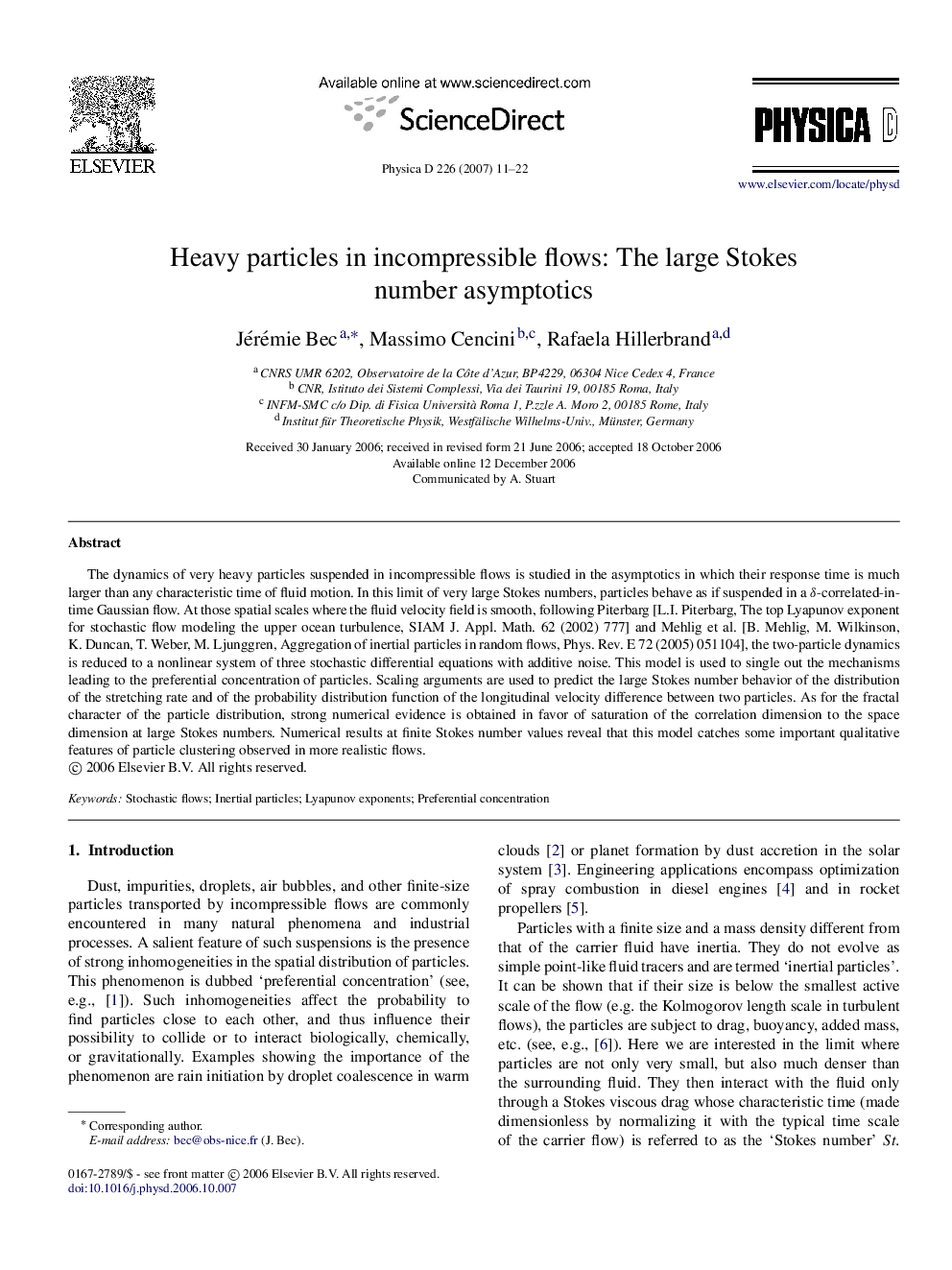| Article ID | Journal | Published Year | Pages | File Type |
|---|---|---|---|---|
| 1899923 | Physica D: Nonlinear Phenomena | 2007 | 12 Pages |
The dynamics of very heavy particles suspended in incompressible flows is studied in the asymptotics in which their response time is much larger than any characteristic time of fluid motion. In this limit of very large Stokes numbers, particles behave as if suspended in a δδ-correlated-in-time Gaussian flow. At those spatial scales where the fluid velocity field is smooth, following Piterbarg [L.I. Piterbarg, The top Lyapunov exponent for stochastic flow modeling the upper ocean turbulence, SIAM J. Appl. Math. 62 (2002) 777] and Mehlig et al. [B. Mehlig, M. Wilkinson, K. Duncan, T. Weber, M. Ljunggren, Aggregation of inertial particles in random flows, Phys. Rev. E 72 (2005) 051104], the two-particle dynamics is reduced to a nonlinear system of three stochastic differential equations with additive noise. This model is used to single out the mechanisms leading to the preferential concentration of particles. Scaling arguments are used to predict the large Stokes number behavior of the distribution of the stretching rate and of the probability distribution function of the longitudinal velocity difference between two particles. As for the fractal character of the particle distribution, strong numerical evidence is obtained in favor of saturation of the correlation dimension to the space dimension at large Stokes numbers. Numerical results at finite Stokes number values reveal that this model catches some important qualitative features of particle clustering observed in more realistic flows.
